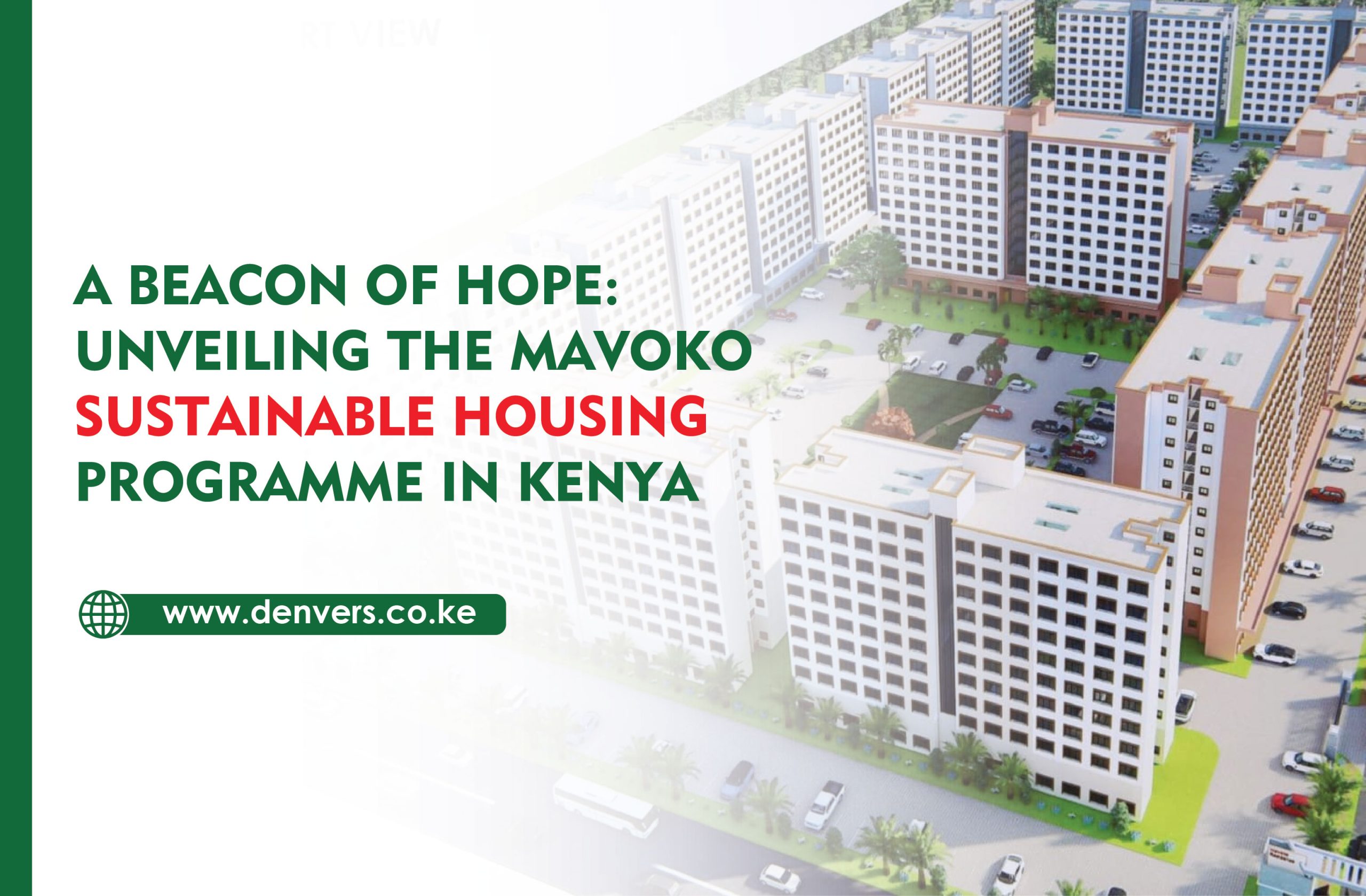Mavoko Sustainable Housing Programme in Kenya
In Kenya, the dream of owning a secure and affordable home remains a significant challenge for many. However, innovative initiatives like the Mavoko Sustainable Neighbourhood Programme are breaking ground, offering a glimpse into a future with accessible and sustainable housing solutions. This in-depth exploration delves into the program’s goals, achievements, and its potential impact on Kenya’s housing landscape.
Understanding the Housing Crisis in Kenya

Kenya faces a significant housing deficit, with a shortage exceeding 2 million units. This scarcity is particularly acute in urban centers like Nairobi, where soaring land prices and construction costs make homeownership a distant dream for many Kenyans. Additionally, informal settlements, often lacking basic amenities and infrastructure, house a large portion of the urban population.
The Vision Behind the Mavoko Sustainable Neighbourhood Programme

The Mavoko Sustainable Neighbourhood Programme emerged as a response to this pressing need. Launched in 2013 through a collaborative effort between the Kenyan government, the Finnish government, and private developers, the program aimed to:
-
Increase Access to Affordable Housing
By constructing low-cost, high-quality housing units in Mavoko, Machakos County, the program aimed to provide Kenyans with an accessible path to homeownership.
-
Promote Sustainable Development
The program incorporated eco-friendly principles into the design and construction phases. This included water conservation strategies, energy-efficient features, and the use of locally sourced materials.
-
Revitalize Communities
Beyond housing units, the program envisioned creating a vibrant and sustainable community with essential amenities like schools, healthcare facilities, and recreational spaces.
The Program’s Achievements: Building a Brighter Future
The Mavoko Sustainable Neighbourhood Programme has made significant strides in achieving its goals:
-
Delivery of Affordable Housing Units
The program has delivered thousands of housing units, ranging from studio apartments to three-bedroom family homes. These units cater to various income levels, making homeownership a possibility for a wider demographic.
-
Focus on Sustainability
The program incorporated rainwater harvesting systems, solar water heating solutions, and energy-efficient lighting to promote responsible resource usage.
-
Community Development
The construction of schools, healthcare facilities, and community centers fostered a sense of belonging and provided essential services to residents.
A Model for the Future: Lessons Learned and Potential Impact

The Mavoko Sustainable Neighbourhood Programme offers valuable lessons for future housing initiatives in Kenya:
-
Public-Private Partnerships
The program’s success highlights the effectiveness of collaboration between government entities, private developers, and international partners.
-
Sustainability Integration
Integrating eco-friendly practices into housing projects sets a positive precedent for future developments.
-
Community-Centered Approach
Focusing on creating vibrant communities alongside affordable housing fosters a sense of ownership and well-being amongst residents.
The program’s impact extends beyond providing housing units. It serves as a model for sustainable and community-oriented housing development, with the potential to inspire similar initiatives across Kenya. By replicating its successful strategies, the dream of accessible and sustainable housing can become a reality for a greater segment of the Kenyan population.
Challenges and Considerations for Continued Success
Despite its achievements, the program has also faced challenges:
-
Infrastructure Development
Keeping pace with infrastructure development, like reliable road networks and adequate waste management systems, remains crucial for the long-term sustainability of the community.
-
Affordability Concerns
While offering a more affordable option compared to urban centers, ensuring housing units remain truly accessible for low-income earners requires ongoing evaluation and potentially adjusted pricing models.
-
Accessibility and Transportation
Improving public transportation options to connect residents to job opportunities and essential services in neighboring areas is vital.
Conclusion: A Hopeful Outlook for Affordable Housing in Kenya
The Mavoko Sustainable Neighbourhood Programme stands as a beacon of hope, demonstrating the possibility of achieving accessible and sustainable housing solutions in Kenya. By addressing existing challenges, learning from its successes, and replicating its model across the nation, Kenya can take significant strides towards bridging the housing gap and empowering its citizens to realize the dream of homeownership.

